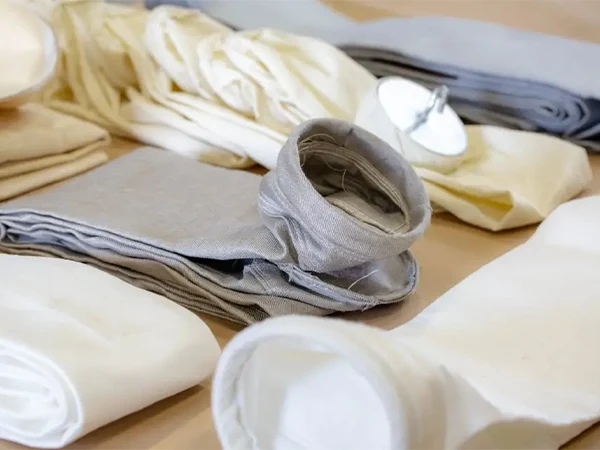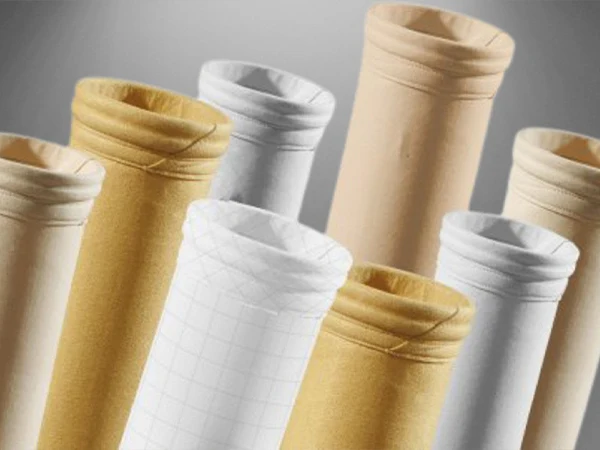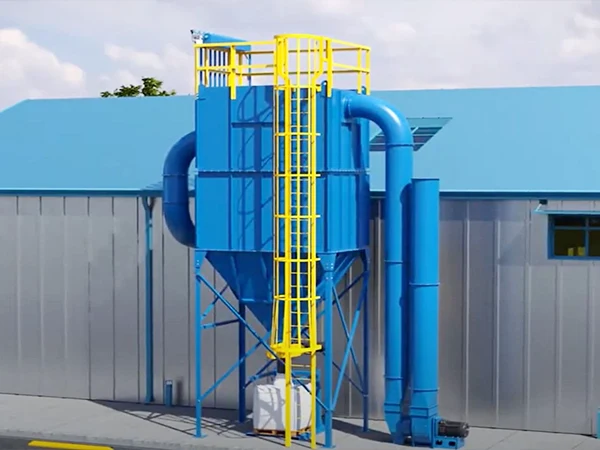| High concentration |
- Use a lower filtration air velocity.
- If hard coarse particles are present, a coarse particle separator can be used at the preceding stage.
|
- Use an external filter pulse dust collector;
- The spacing between filter bags should be wide for smooth dust fall;
- A large ash hopper should be designed to ensure reasonable airflow distribution and take measures to prevent filter bag abrasion;
- The dust cleaning device should operate continuously and reliably.
|
- The filter bag should have minimal deformation and be thick;
- The surface of the filter bag should be calendered or treated with oil impregnation for hydrophobicity and additives;
- It is best to choose PTFE composite material.
|
| High humidity conditions vary greatly |
- Insulate and drain the system pipeline;
- Insulate or heat the dust collector;
- Control the operating temperature of process equipment.
|
- Use boat-shaped ash hoppers and air cannons to prevent ash blockage in the hopper;
- The compressed air for blowing should be dry and heated to prevent condensation;
- Set up a drying, hot air delivery system;
- Use sintered plate dust removal equipment; (5) Increase the pressure of the blowing system.
|
- Use PTFE composite material;
- To ensure the filter material does not condense, use filter material with good hydrophobic and oleophobic properties and a smooth surface treatment.
|
| Large temperature variations, intermittent process |
- Extend the dust removal pipeline to prevent excessive temperature;
- Add a regenerative cooler to reduce temperature fluctuations;
- Add a cold air valve for blending cold air to prevent excessive temperature.
|
- If condensation occurs when the temperature drops, consider insulation and heat tracing for the dust removal equipment;
- The compressed air for blowing should be dry.
|
- Use temperature-resistant filter materials;
- When humidity is high, hydrophobic filter materials are required.
|
| Ultra-low emission requirements are high or there are special purification requirements |
- The filtration air velocity should be conventional (1/2)–(2/3);
- Avoid insufficient or excessive cleaning, effectively control the pressure, amplitude, and cycle of cleaning.
|
- Ensure good sealing of dust removal equipment;
- Use electrostatic-bag composite dust collectors;
- Increase the filtration area.
|
- Use MPS filter material with special technology, coated with an effective active filter layer, which has a good filtering effect on dust smaller than 5 μm;
- Use PTFE membrane filter material;
- Use ultra-fine fiber filter material.
|
| Stable low-resistance operation |
- Reduce the resistance at the air inlet and outlet;
- Reduce the internal resistance of the equipment.
|
- Effective dust cleaning mechanism;
- Shorten dust cleaning cycle;
- Adopt fixed-resistance dust cleaning control;
- Lower filtration speed.
|
- Use conventional filter material post-treatment processes such as impregnation, coating, and calendering;
- Implement surface filtration to prevent increased resistance of the filter material during operation.
|
| Dust removal containing oil mist |
- The process may be combined with other dust removal methods to absorb oil mist;
- Pre-spray and continuously add an appropriate amount of adsorptive dust inside the pipeline;
- There is a possibility of sparks and combustion explosion, add a flame arrester.
|
- Use a pulse dust collector to improve cleaning ability;
- Insulate and heat the dust collector to prevent oil mist and water vapor condensation;
- Implement explosion-proof measures for the equipment.
|
- Select filter material treated with oil and water repellency;
- Use PTFE membrane filter material;
- Use corrugated sintered plates;
|

































